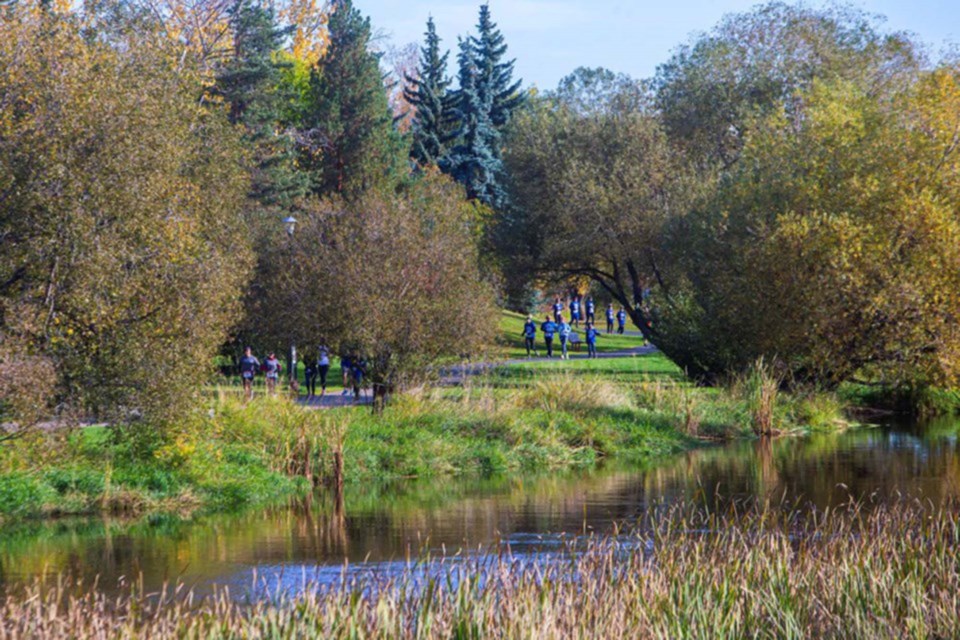The City of St. Albert is considering reducing its growth funding to bring down an anticipated 8.2-per-cent tax increase.
Council met Aug. 16 to discuss measures to bring down an 8.2-per-cent tax increase for 2023. During the meeting, one of the options council explored would reduce the growth component of pay-as-you-go capital funding taken from the tax levy, which is $6.1 million of the estimated $127-million levy for 2023, city-spokesperson Cory Sinclair relayed in an email.
Capital projects include both growth projects, as well as repair, maintenance, and replacement (RMR) of existing infrastructure.
Diane McMordie, the city’s chief financial officer, said in an interview the city has two streams to fund capital projects: grants from other levels of government, and pay-as-you-go funding, which is a portion of the city’s tax levy.
The pay-as-you-go funding is especially handy because grant programs — such as the province’s Municipal Sustainability Initiative (MSI) grant — have minimum project size requirements of $375,000.
Grants can also have cost-sharing requirements, where the city needs to foot some of the bill to qualify for funding.
“We use our pay-as-you-go to be able to meet that matching piece,” McMordie said.
Although growth projects and existing infrastructure are both funded through the same capital-funding envelope, the city’s current budget guiding principles dictate council must fund maintenance to existing infrastructure prior to considering funding for growth.
“We have to play a bit of a puzzle game with that funding,” McMordie said.
Accordingly, another measure council can consider to reduce the tax levy — suspending the 2023 RMR portion of the tax increase, which amounts to around $1.6 million — should not be considered in conjunction with reducing the pay-as-you-go capital funding, McMordie said.
In 2019, council approved adding this recurring 1.5-per-cent tax increase to help manage a shortfall in RMR funding.
“I certainly wouldn’t do both,” McMordie said of reducing both the RMR levy and pay-as-you-go capital funding, noting it would be "a double cut to that pay-as-you-go, which would put us at way too much risk of not being able to move forward with critical projects.”
RMR levy
Although forgoing the 2023 RMR levy is on the table for council to choose to decrease the tax increase, McMordie said administration would “never recommend” this option.
Instead, McMordie said the suggestion on the pay-as-you-go capital reduction is specifically focused on cutting down on growth projects.
“There is risk, because the less pay-as-you-go funding we have, we have less flexibility for the [grant cost sharing], less flexibility for smaller projects, or projects that don’t qualify at all of grant funding,” McMordie said, giving the example of the city’s transportation master plan, which grants won't cover.
However, McMordie said it would be riskier to pass over replenishing RMR funds.
“We did a lot of work with council to get them to understand the future state of our assets,” McMordie said of the levy. “If we don’t continue to increase our contributions to our RMR, we’re going to be in a world of trouble 20 years from now, or if we get further cuts from the province in terms of our grants.”
McMordie noted the grant set to replace the MSI funding from the province — the Local Government Fiscal Framework (LGFF) — is likely going to be 25 per cent less than what the city has historically received.
During the Aug. 16 meeting, McMordie told council members holding back on growth projects might come with some positives.
“Every new asset or project we build becomes a liability the day it’s opened, because now we need to start saving to repair it, maintain it, replace it,” McMordie said.
Further, taking on fewer capital projects could also give the city time to address the backlog of projects already underway, she said, and help give the public a sense of confidence that city spending is in check.
“It’s a different type of funding, capital versus operating,” McMordie said. “It’s not always clear in the community.”
Members of council, however, expressed resistance to the idea of holding back on growth.
Mayor Cathy Heron said reducing what council spends for growth from her perspective is a “hard no,” noting reductions could mean holding back on projects such as Oakmont connections for the Red Willow Trail system, Meadowview Road construction, traffic calming, new transit buses, and dog-friendly parks.
“We need growth money,” Heron said
However, Heron also noted she would not like to see a reduction in the city’s RMR levy.
Coun. Ken MacKay said he understands “it’s a two-edged sword.”
“We get growth, got to look after it eventually,” MacKay said. “I’m living in today’s world right now — we’re drowning … I realize it’s a hard choice, [but] I need growth.”
Council will debate official budget decisions later this year.




